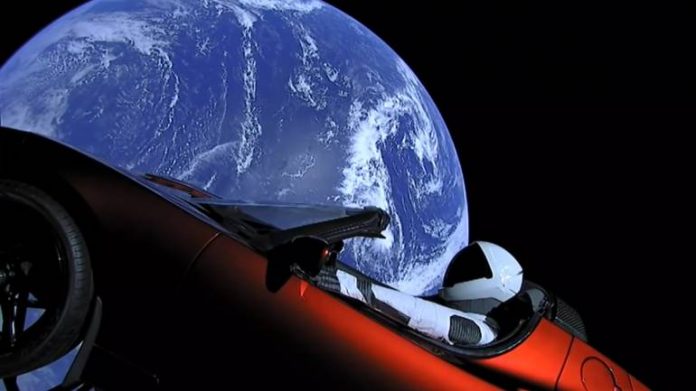No one ever believed that Elon Musk was being serious when he announced plans to send a Telsa Roadster into outer space. But on February 6 this year, that’s exactly what happened. In a historic event, SpaceX successfully launched a Falcon Heavy, the world’s most powerful rocket in 45 years since the shuttle system, carrying the CEO’s personal Tesla Roadster finished in cherry red. As publicity stunts go, it was literally out of this world. Watching videos of a car orbiting the earth was surreal.
Nine months after its initial launch, the Roadster has clocked up quite a few miles while traveling through space. On Twitter, SpaceX announced the Tesla Roadster and Starman, the spacesuit-clad dummy behind the wheel, has traveled past Mars in its journey through space. “Starman’s current location. Next stop, the restaurant at the end of the universe,” SpaceX wrote on Twitter with a diagram showing the car’s current orbit.
The Tweet is a clear nod to the late writer Douglas Adams. “The Restaurant at the End of the Universe” is the second novel in Adams’ five-part “Hitchhiker’s Guide to the Galaxy” series, which Musk is a huge fan of. The car’s dashboard display also has a reference to the Hitchhiker’s Guide as it was programmed to read “Don’t Panic,” a phrase that appears on the cover of the novel.
Continuing the pop culture references, the dummy’s name “Starman” is the title of a 1972 song by David Bowie. Bowie’s 1969 hit “Space Oddity” was played during the car’s orbit, while “Life on Mars” was played during lift-off.
According to Space.com, Starman and the Tesla Roadster won’t stay beyond Mars forever. A study suggests they will come within a few hundred thousand kilometres of our planet in 2091 and slam into either Venus or Earth within the next few tens of millions of years. Apparently, there’s a six percent chance it will hit Earth in the next one million years and a 2.5 percent of it colliding with Venus in the same timeframe.















